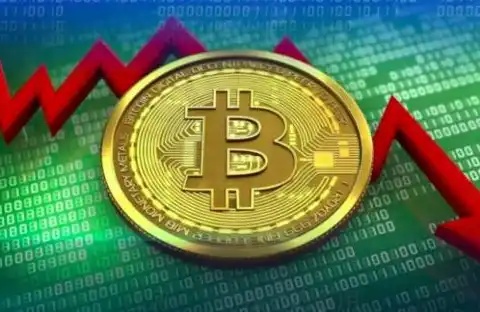Arthur Hayes: BTC will fluctuate between $60,000 and $70,000 in the next three months
Original title: Mayday
Original author: Arthur Hayes, BitMEX co-founder
Original translation: GaryMa, Wu said blockchain
Note: This article is based on the original text and some details or information may be deleted. We recommend that readers refer to the original text while reading this article for more comprehensive information.
Since mid-April, some degens have screamed "May crisis" when they saw the continued decline in the crypto market.
The price trend is in line with my expectations. The US tax season, concerns about the future policy of the Federal Reserve, the implementation of the Bitcoin halving event, and the slowdown in the growth of US Bitcoin ETF asset management (AUM) have jointly produced a much-needed market cleanup in the first two weeks. Speculators or short-term investors may choose to temporarily exit the market and wait and see what happens next. And we hard-nosed people will continue to hodl and if possible accumulate more of our favorite crypto reserve assets like Bitcoin and Ethereum, as well as high beta altcoins like Solana, Dog Wif Hat, and I have to say Dogecoin.
This is not a fully polished global macroeconomics, politics, and crypto article. Instead, I want to highlight why the US Treasury, Fed, and Republic First Bank bailouts provide or increase access to fiat liquidity now and in the near future. I will quickly go through some tables that support my bullish view.
Quantitative Tightening (QT) Taper = QE
When regular investors equate Quantitative Tightening (QE) with money printing and inflation, it spells trouble for the elite. So they need to change the terminology and the method of providing the financial system (cancer) its dose of monetary heroin. Reducing the rate of asset taper under the Fed's Quantitative Tightening (QT) program sounds harmless. But make no mistake - by reducing the pace of QT from $95 billion per month to $60 billion per month, the Fed has actually increased USD liquidity by $35 billion per month. When you combine interest on reserve balances, reverse repurchase agreement (RRP) payments, and interest payments on US Treasury bonds, the reduction in QT increases the amount of stimulus provided to global asset markets each month.
The Fed announced this week that it will cut QT at its May 2024 meeting. Using a handy chart, let's take a look at USD liquidity before and after the meeting.

Note that the QT item is based on the Fed's balance sheet reported weekly, with the actual average monthly reduction in 2024. As you can see, the Fed missed its target of $95 billion per month. This raises the question if the target was $60 billion per month, would the Fed also miss that target. Missing the target pace is good for USD liquidity.

"High" interest rates require the Fed and the US Treasury to pay interest to the rich, and coupled with the deceleration of QT, this is even more stimulative.
This is the purpose of the Fed's Powell side, what about his good partner Yellen?
US Treasury Quarterly Funding Announcement (QRA)
Yellen's statement is more important than that of any other monetary official due to the US's fiscal dominance. Each quarter, the U.S. Treasury releases a QRA to guide the market on the amount and type of debt that must be issued to finance the government. Ahead of the Q2 2024 QRA, I have some questions:
1. Will Yellen borrow more or less than the previous quarter, and why?
2. What will the maturity profile of the debt issued be?
3. What will the target Treasury General Account (TGA) balance be?
Question 1:
In the April-June 2024 quarter, the Treasury expects to borrow $243 billion of privately held net market debt, assuming a $750 billion end-June cash balance. The borrowing estimate is $41 billion higher than published in January 2024, primarily due to lower cash receipts, partially offset by a higher beginning-of-quarter cash balance.
This is bad news if you hold Treasuries. Supply will increase, and tax revenues will continue to be disappointing despite a strong U.S. economy and stock market. This will accelerate the bond market's rampage, sending long-term interest rates sharply higher. Yellen's response to this will likely be some form of yield curve control, and that's when Bitcoin will really start to climb toward $1 million.
Question 2:
Based on current fiscal forecasts, the Treasury expects to increase the size of its 4-week, 6-week, and 8-week bill auctions in the coming days to ensure that our cash needs are met for a week around the end of May. Then, in advance of the June 15 non-withholding and corporate tax payment date, the Treasury expects to modestly reduce the size of its short-term bill auctions in early to mid-June. Then, throughout July, the Treasury expects to return the size of its short-term bill auctions to or near the February and March levels.
Yellen needs to increase the issuance of short-term bills because the market cannot afford her to react at the long end of the rate curve. Another benefit of increasing bills is that it will clean up reverse repurchase agreements (RRPs), injecting dollar liquidity into the system.
Question 3:
In the July-September 2024 quarter, the Treasury expects to borrow $847 billion of privately held net market debt, assuming a cash balance of $850 billion at the end of September.
The TGA balance target is $850 billion. Currently that balance is $941 billion, which equates to a reduction of about $90 billion over the next three months.
The impact of this QRA is a slight positive for dollar liquidity. It is not as sensational as the November 2023 announcement that sent bonds, stocks, and crypto prices soaring. But it will slowly help our investments grow in value over time.
Republic First Bank
Have you ever heard of this tiny, rotten-assed bank? Before it failed, I had never heard of it. The failure of another too-big-to-fail (TBTF) bank isn't noteworthy. What's important is the reaction of the officials who control America's currency.
The U.S. government (through the FDIC) insures deposits in any bank in the U.S. up to $250,000. When a bank fails, uninsured depositors are supposed to lose everything. However, in an election year, this is politically unacceptable, especially if those in power have been assuring the public that the banking system is healthy.
Here's an excerpt from the FDIC:
As of January 31, 2024, Republic Bank had total assets of approximately $60 billion and total deposits of approximately $40 billion. The FDIC estimated that the cost to the Deposit Insurance Fund (DIF) associated with Republic Bank's failure would be $667 million. The FDIC judged that, compared with other alternatives, Fulton Bank's acquisition of Republic Bank was the cheapest solution to the DIF, an insurance fund created by Congress in 1933 and administered by the FDIC to protect deposits at banks nationwide.
To explain what happened in plain language requires reading between the lines.
Fulton agreed to acquire Republic First and ensure that all depositors were fully covered, provided that the FDIC put up some cash. FDIC insurance gave Fulton $667 million so that all Republic First depositors would be fully covered. Why should the insurance fund be used for all deposits when some deposits were uninsured?
The reason is that if all deposits are not covered, then the banks will collapse. Any large depositor will immediately move their funds to a TBTF bank, which has a full government guarantee on all deposits. Subsequently, thousands of banks across the country will fail. This is not a good look in a democratic republic where elections are held every two years. Once the public knows that the bank failures are entirely due to the policies of the Fed and the US Treasury, some overpaid idiots will have to get real jobs.
Rather than suffer a setback at election time, the people in charge are essentially now guaranteeing all deposits in the US banking system. This is actually an implicit increase of $6.7 trillion, because that is the amount of unprotected deposits reported by the Federal Reserve Bank of St. Louis.
This leads to money printing, because the FDIC does not have $6.7 trillion in its insurance fund. Maybe they need to seek advice from CZ, because the money is not safe. Once the fund is exhausted, the FDIC will borrow money from the Fed, which will print money to repay the loan.
As with the other implicit money printing policies discussed in this article, there has not been a massive liquidity injection today. But we can now be fairly confident that trillions of dollars of potential liabilities have been added to the Fed’s balance sheet, which will be financed through money printing.
Buy in May, Hold and Wait
Slowly adding billions of dollars of liquidity each month will dampen negative price swings going forward. While I don’t expect cryptocurrencies to fully realize the inflationary nature of recent US monetary policy announcements immediately, I do expect prices to bottom, oscillate, and begin to slowly rise.
As summer arrives in the northern hemisphere, some crypto investors will feel the market’s activity and may feel that they have pre-acquired wealth, so they will spend time in some popular places and enjoy life. I certainly won’t always be watching the Bitcoin market, I can go dancing. The recent violent sell-off provides a perfect opportunity for me to unlock my USDe and spend synthetic dollars on high beta shitcoins.
I’m going to buy Solana and the related Dogecoin for momentum trading. For longer term altcoin holdings, I will be increasing my allocation to Pendle and identifying other "discounted" currencies. I will use the rest of May to add to my position. Then it's just a matter of holding onto the coins and waiting for the market to realize the inflationary nature of the recent US monetary policy announcements.
For those who need my forecast, here are the highlights:
1. Did Bitcoin hit a local low of around $58,600 earlier this week? Yes.
2. What is your price prediction? A big surge to over $60,000, then price range between $60,000 and $70,000 until August.
3. Are the recent Fed and Treasury policy announcements a hidden form of money printing? Yes.
Original link
Welcome to join the official BlockBeats community:
Telegram Subscription Group: https://t.me/theblockbeats
Telegram Discussion Group: https://t.me/BlockBeats_App
Official Twitter Account: https://twitter.com/BlockBeatsAsia


 Forum
Forum Finance
Finance
 Specials
Specials
 On-chain Eco
On-chain Eco
 Entry
Entry
 Podcasts
Podcasts
 Activities
Activities










 0
0